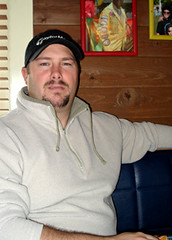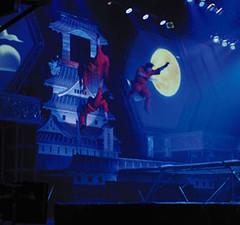
When you're working against the clock on a theatrical release of an indie film, anything can happen and usually does. That was how James Hoke, executive producer with Three Kings Productions, described it last April.
One month later, I can attest to the fact that he is right. Much like life, it's filled with hits, misses, and unknowns.
The Three Kings film, What Goes Up, wasn't really known as 'What Goes Up' five weeks ago. And for the most part — despite Steve Coogan, Hilary Duff, Josh Peck, Olivia Thirlby, and Molly Shannon — it wasn't even known. Today, the film that will open in select cities on May 29 is known mostly through its growing groundswell.
The original model was different. Social media was meant to serve as a supporting mechanism for media engagement. And, right now, there are no less than 40 requests for interviews on the table being fielded by ten different public relations and marketing firms divided by region and product (film and soundtrack).
The bottleneck for success has become a function of scheduling (with Coogan wrapping his world tour; Duff walking for AIDS, which is close to our hearts; etc.) and possibly the earliest reviews.
Variety wasn't kind to the movie, making the film into some sort of statement against journalism. It isn't. But the review from Pete Hammond, at Hollywood.com, isn't up yet to provide a contrast.
'''What Goes Up' is a 2009 sleeper, a complete original, and definitely not your typical teen comedy. It's a darkly funny, wonderfully twisted story that marches to its own surprising beat. The entire cast is superb. Steve Coogan is perfect. Hilary Duff's seductive presence proves she's an actress to watch. Olivia Thirlby is a real find." — Pete Hammond, Hollywood.com
One of many fan comments we've read reinforces the idea. Teresa Reile from Buffalo, New York, where the film debuted at a film festival, called it "The Breakfast Club meets Mulholland Drive. It will become a cult classic!!" She nailed it.
As such, not every critic or moviegoer will get it or like it. Entertainment is like that. It's something I've known all too well after covering fan campaigns to save Jericho and Veronica Mars. The net result is the same. When traditional communication slows down, social media speeds up. Since fans are in the balance, we wanted to avoid making any them feel like Jericho or Veronica Mars fans did. It makes a difference.
Where social media has been hitting, missing, and providing unknowns.
If Geoff Livingston's post isn't enough evidence that social media is fluid, then 'What Goes Up' drives the point home. While the production blog provides a diary of sorts, the real interest remains on existing fan forums, Flickr, and YouTube. YouTube, specifically, delivered 200,000 views (building to 20,000 to 30,000 per day) before one of the unknowns happened.
The YouTube account was mistakenly suspended by an automated process. While one of the studios involved is making inquiries, there is no time to sort it out. So, in the interim, we shifted the cast interviews to Revver while setting up a new direct channel for the producer. It's a good thing we have a blog, which has helped facilitate the transition.
What can't be saved is the viral nature of the interviews, which were shared by several popular media sites, nor the basic nature of content that spreads. Much like Twitter followers, videos with 40,000 views attract more attention than videos with 40 views. No matter. Social media is situational. Each program is different. Yet, all of them require that you manage and move with it. You cannot control it (not that communication was ever controlled anyway).
For this program, some elements have worked better than others. Despite high engagement, Twitter is comparatively time intensive. Facebook much less so, because of the variety of communication methods, allowing us to message, post, share, and chat with fans on their terms. Like all of our components, we chose every network based on where fans wanted us to be and not where we wanted to be. And, if this was a long-term program, I would likely shed some components along the way.
When communication changes, the seven Fs still apply.
Yesterday, I mentioned the seven Fs. They apply to indie films. Perhaps they do even more so because we balance what we can share and what we cannot share about the soundtrack and the film every single day. We don't do it for us; we do it to prevent confusion.
While we would love to be transparent, transparency would have killed any sense of community long ago. Things change all the time, sometimes on an hourly basis given the intricacies and interests of many different stakeholders. Instead, we rely on authenticity, which means minimizing the steady state of changing communication and settling on those items that are least likely to change.
Sometimes things change after we report them, but minimizing any communication that changes and impacts people seems better than changing up the communication every five minutes or so. Even more important, when we do change the communication, we consider the obvious. They aren't just users, customers, consumers, or participants (even if we use those words as descriptors) — they are stakeholders, and some of them already "feel like family."
A couple of my colleagues told me they don't "get" everything we're doing. That's okay. We're not writing for them. We're working for our stakeholders, which in this case are fans. As Valeria Maltoni might say, we always were. And, we always will be.




















